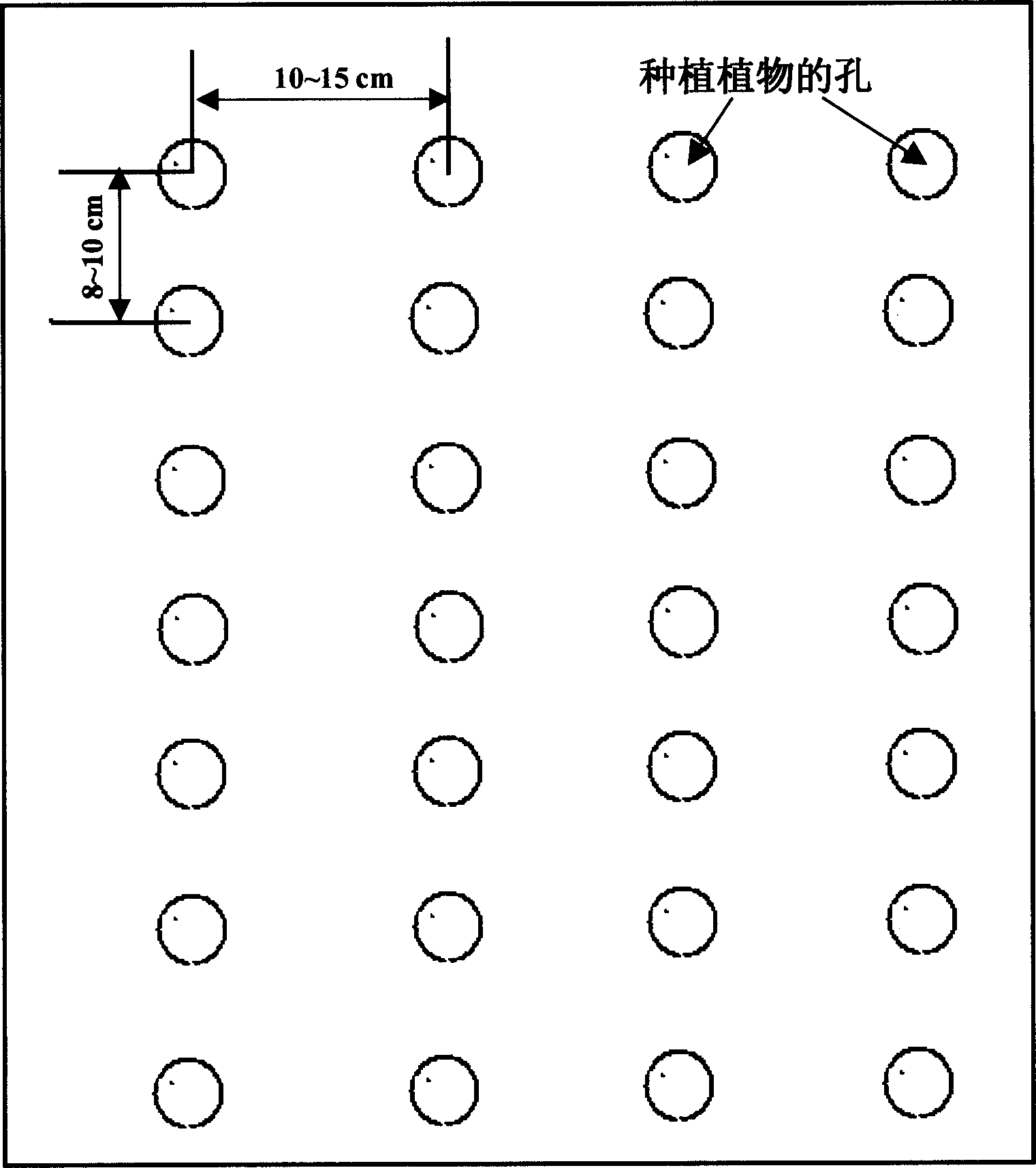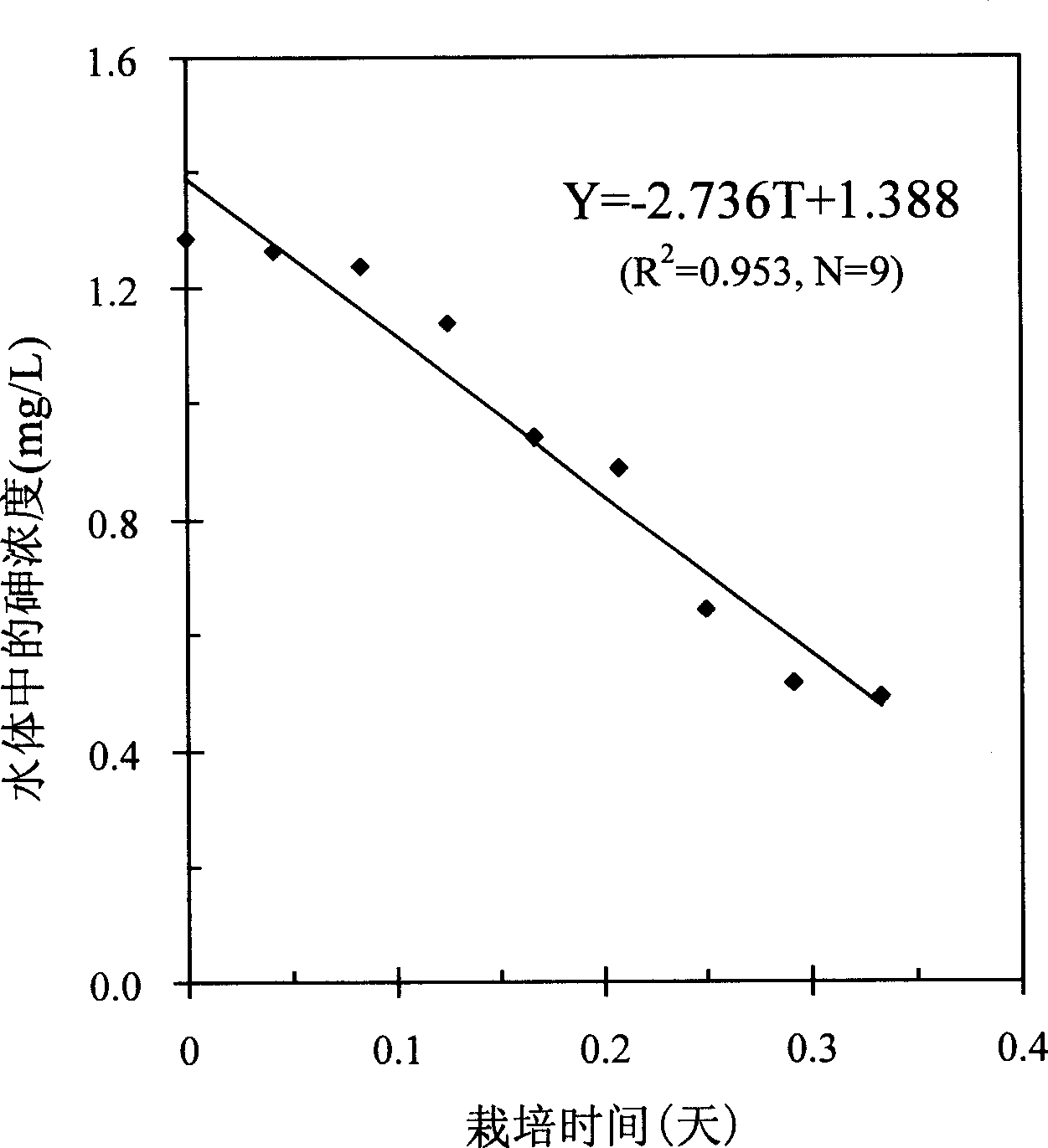Method for repairing arsenium contaminated environment
An arsenic pollution and environmental technology, applied in the field of remediation of arsenic-polluted environment, can solve the lack of economical, large-scale remediation and treatment technology, the ineffectiveness of high-arsenic tailings and high-arsenic wastewater treatment, and the inability to obtain treatment and remediation of arsenic. Environmental pollution and other problems, to achieve good environmental benefits, no secondary pollution, and no damage to ecological functions.
- Summary
- Abstract
- Description
- Claims
- Application Information
AI Technical Summary
Problems solved by technology
Method used
Image
Examples
Embodiment 1
[0022] Embodiment 1: Remediation of arsenic-contaminated soil with big-leaf wellhead edge grass
[0023] In the arsenic-contaminated soil containing 206 mg / kg of arsenic, the seedlings of S. japonica were transplanted, and the row and plant spacing were 15-20 cm and 8-10 cm, respectively. After the big-leaf wellhead edge grass survived, it was managed according to the management methods of common crops, and the aboveground part was harvested after 5 months. It was determined that the total amount of arsenic absorbed from the soil by the upper part of the grassland at the mouth of Daye well was 3570mg / kg, and the arsenic content in the soil was reduced from 206mg / kg to 165mg / kg, and the total arsenic in the soil was reduced by 19.9%. After the plants continued to grow for 3 months, they were harvested for the second time. At this time, the arsenic content in the soil was reduced to 134 mg / kg, and the total arsenic in the soil was reduced by 35.0%. Afterwards, the above-ground ...
Embodiment 2
[0024] Example 2: Removing arsenic pollution in water body with big-leaf wellhead edge grass
[0025] Punch holes in a row on the plastic foam board, the density of the holes is 10-15cm × 8-10cm, and transplant 2-3 large-leaf wellhead grasses with a height of about 10-15cm in each hole. Place (float) the plastic foam board planted with big-leaf wellhead edge grass horizontally on the water surface of the polluted water body. During the process of plant growth and absorption, the root system of S. dahliae can quickly absorb and enrich a large amount of arsenic from the water body, and transport the absorbed arsenic to the shoot. When the arsenic concentration in the water reaches the standard, remove the plastic foam board and large-leaf wellhead edge grass from the water surface. The arsenic in the water body can be taken away (removed) by removing the large-leaf wellhead border grass plant, thereby achieving the effect of purifying the arsenic-polluted water body.
[0026] ...
PUM
 Login to View More
Login to View More Abstract
Description
Claims
Application Information
 Login to View More
Login to View More - R&D
- Intellectual Property
- Life Sciences
- Materials
- Tech Scout
- Unparalleled Data Quality
- Higher Quality Content
- 60% Fewer Hallucinations
Browse by: Latest US Patents, China's latest patents, Technical Efficacy Thesaurus, Application Domain, Technology Topic, Popular Technical Reports.
© 2025 PatSnap. All rights reserved.Legal|Privacy policy|Modern Slavery Act Transparency Statement|Sitemap|About US| Contact US: help@patsnap.com


